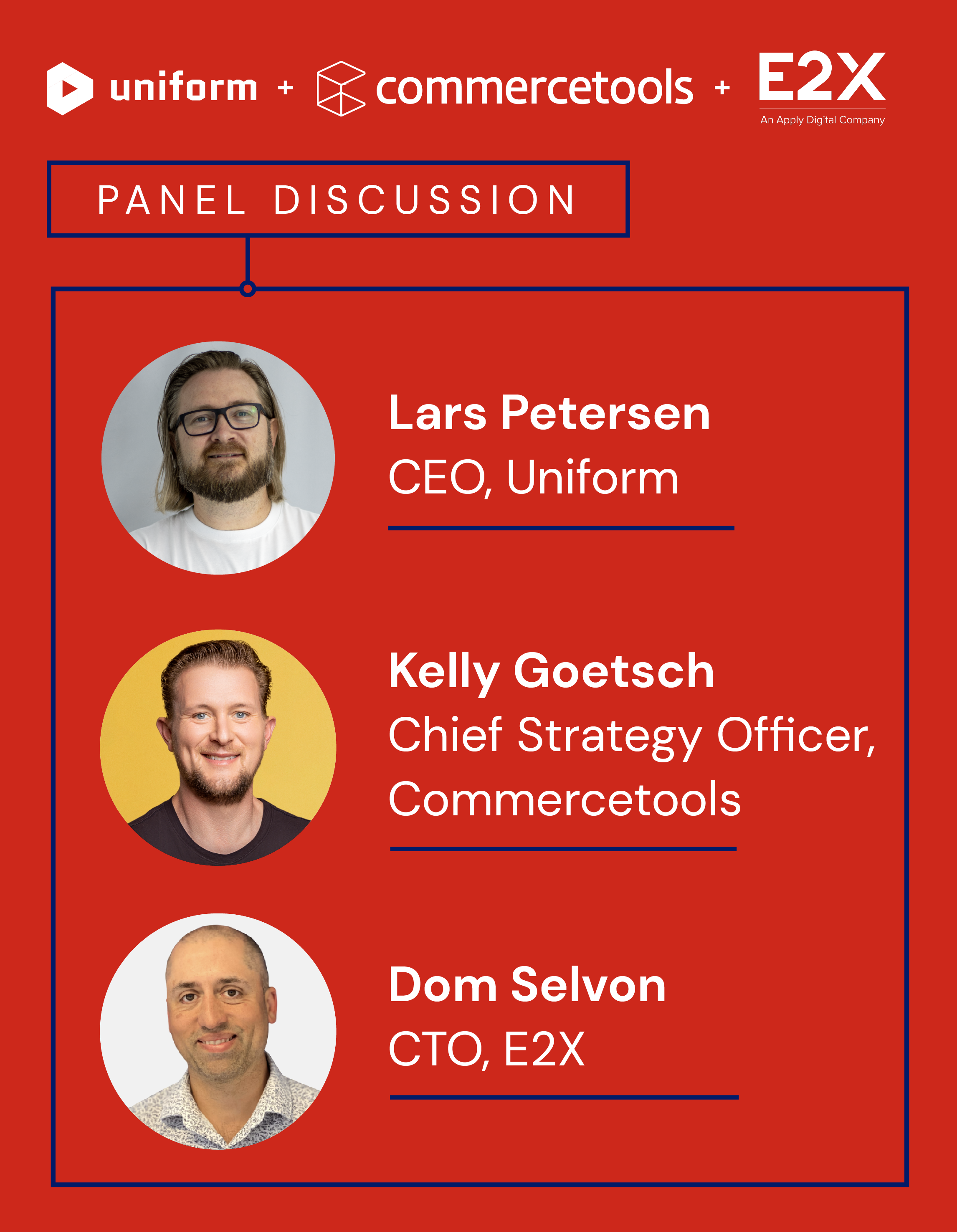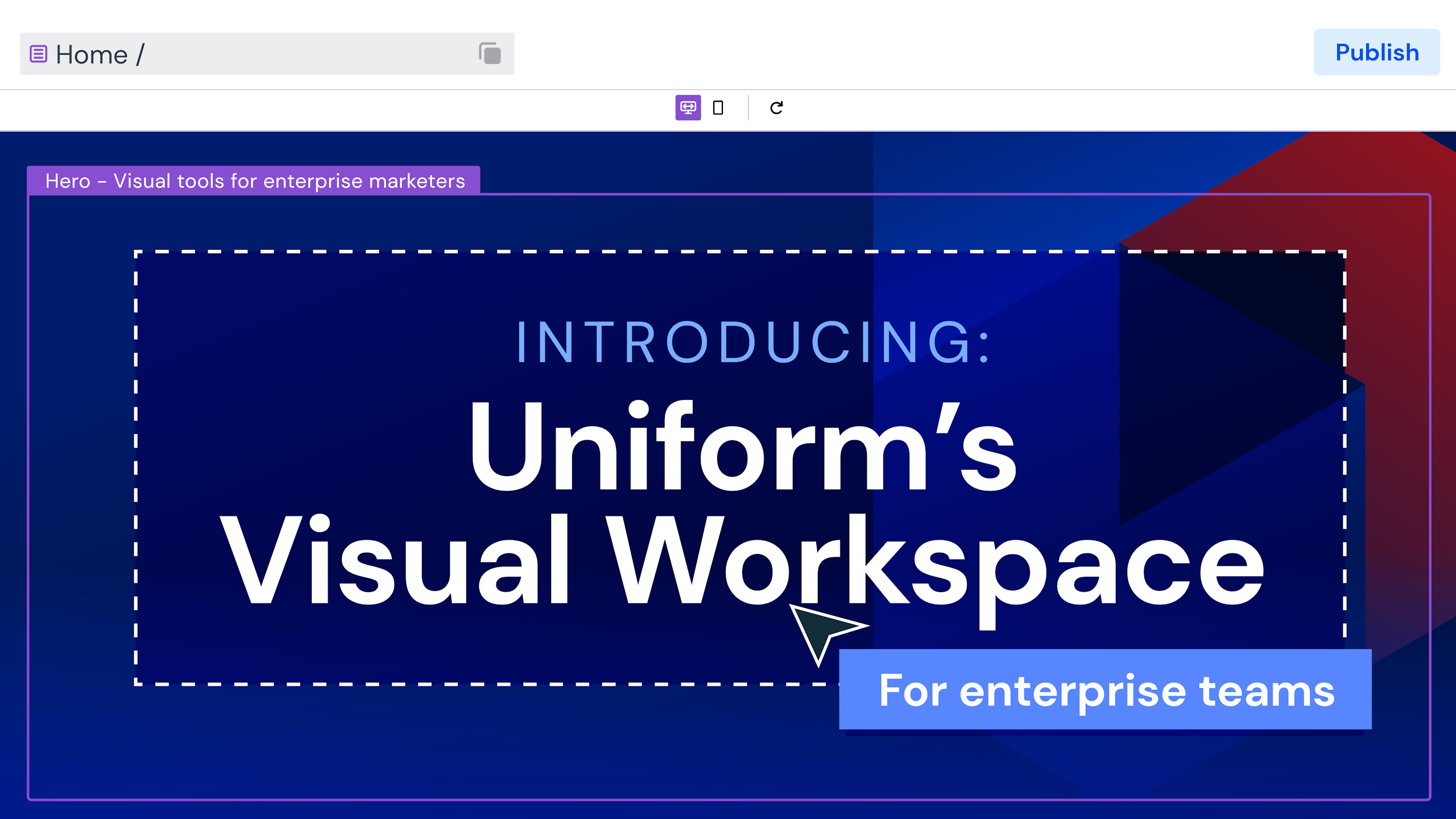Uniform blog/Why it’s time for agencies to embrace digital experience composition
Why it’s time for agencies to embrace digital experience composition
Why it’s time for agencies to embrace digital experience composition
Since Gartner officially coined the term “digital experience composition,” the industry has been abuzz with the implications of integrating and rendering digital experiences at speed and scale through composable orchestration. That’s not surprising given that, since integrations have historically stood as the “long pole in the tent” for tech projects in agencies, digital experience composition platforms (DXCPs) have encountered scepticism and even a bit of fear from agencies.
Across the agency and consultancy sector, there are companies who see the rise of DXCP as a threat to all of the billable hours they’ve been able to charge in the long, laborious process of connecting headless services. This process hasn’t only created big bills—it’s led to unwieldy build processes and unhappy developers who have to spend multiple sprints mapping data values across services rather than building things people will enjoy using.
At Apply Digital, we’re an innovation consultancy that focuses on results and long-term value for our clients, which is why my team and I are incorporating a DXCP into our MACH and composable strategies. We don’t see DXCP as a threat to our billable hours or project sizes, it actually reinforces our model of fulfilling clients’ unique needs with an optimum solution and long-term relationships, concentrating on high-value features, not data mapping and integrations that should be commodified. DXCP’s flexible integration model also makes us better long-term partners, as we can easily adapt technology as our clients’ needs change rather than going back to the drawing board.

System integration is becoming commoditised—and that’s good news
What was new in commerce over a decade ago—online shopping carts, same-day fulfilment, and so forth—is now a commodity. Because constant exposure to commerce has fueled consumer expectations for near-instantaneous, omnichannel service with little tolerance for slow experiences, commoditisation in the integration space, while a natural consequence of what we do as system integrators, is a must for meeting ever-changing consumer demands.
Agencies are full of engineers, not plumbers
Similar to plumbers who install piping that supplies water to a house, agencies have traditionally combined “back-of-house” elements from headless vendors into a cohesive tech stack by manually connecting the “pipes.” However, the integration process is repetitive, time consuming, and often fraught with complexities, competing opinions, and different priorities.
Moreover, traditional agencies working with composable architectures can easily fall into the trap of connecting headless tools with layers of glue code. Scaling and maintenance become difficult, and eventually the entire process turns so unwieldy that yet another expensive replatforming project is inevitable.
Albert Einstein famously said, “Insanity is doing the same thing over and over and expecting different results.” How can we claim to be innovating for clients while persisting with the same outdated mode of operation ourselves?
To live our purpose, we’ve codified our values into SHAPE—a framework on which to base our decisions and deliver faster, more flexible solutions that create long-term and strategic value. Bringing DXCPs to our projects is part of how we stay true to our commitment to being smart, humble, active, positive, and excellent to best serve our clients.
DXCPs bring speed and value to client projects
DXCPs remove the need for us to write endless boilerplate code for connecting tools, enabling us to build enterprise-scale software based on commoditised elements in their stack. Consultancies like Apply Digital can easily “plumb” together composable elements like commerce without involving engineers, reducing integration time and diverting emphasis towards effectual client tasks.
Going back to our analogy of the house, imagine you’re an estate agent looking for a client’s dream home. When extolling the features of a house, you wouldn’t rave about the custom-made pipes buried deep within the walls—infrastructure that’s difficult to replace. Instead, you’d sing praise of the selling points, such as the location, property type, and room size.
Similarly, our clients look for a strategic partner that can deliver their priorities, namely, building a unique, personalised consumer experience that offers gratifying, long-term results for their business. With a DXCP:
- Prebuilt integrations eliminate the need for glue code, reducing time to value and long-term costs.
- By adopting a value-first instead of code-first approach, we unlock parallel collaboration within workflows and boost team productivity.
- Vendor lock-in disappears, enabling developers to use tools that work best for the project. Clients gain the best of both worlds, reaping the benefits of a composable stack without interrupting the services powered by legacy systems.
DXCPs offer a first-class developer experience
Every technology business is in a nonstop race to attract and retain the next generation of skilled engineers. Because DXCPs’ API integration eliminates repetitive processes, saving time and resources on programming with boilerplate code, developers and engineers can tackle high-stakes, innovative projects that generate value and strengthen infrastructure.
As a result, junior engineers can employ the best tools for the job at hand while delivering meaningful results rather than “paying their dues” mapping data fields for multiple sprints at a time. As an engineering leader, I’m delighted to offer more exciting and innovative tasks to attract and retain the industry’s top talent. That in turn of course, leads to better results for our clients.
Apply Digital and DXCP accelerate time-to-value
At Apply Digital, we see an ever-growing demand for well-designed, unified digital experiences across touchpoints and channels. That trend holds especially true in areas such as retail, where e-commerce represents a significant chunk of total sales worldwide, and brands must win customers in an overcrowded market.
Through a DXCP, we can orchestrate headless and composable commerce systems into a cohesive experience, modifying it to match customer demand for products and services lightning fast. Even though some still prefer an all-in-one platform, more brands will demand digital experiences that move beyond the platform-first paradigm to a DXCP so as to keep modernising and responding to change without being dictated by a vendor’s roadmap.
DXCPs are the future of digital experiences
Amid the countless tools for creating engrossing experiences, DXCPs take brands to the next level in their journey. For all that disruption to the status quo produces uncertainty, DXCPs such as Uniform present rich opportunities for consultancy-client collaboration and a more effective approach for building flexible, agile, and results-driven client implementations.
Ultimately, instead of focusing on the low-level connections in a client’s stack, we can allocate more resources to acquiring a deeper understanding of clients’ goals and building the solution that delivers for them long term. To us, that’s a consultancy’s real purpose and the reason why we’re excited about digital experience composition—all due to the benefits of the DXCP.
Now that the DXCP era has arrived, are you ready to help your clients thrive in the composable ecosystem? For helpful details, watch this webinar on how agencies are navigating the DXCP and headless architecture.
Dom Selvon is the global CTO of Apply Digital and a board member of the MACH Alliance.

Transform your digital strategy with composability
WATCH ON DEMAND



